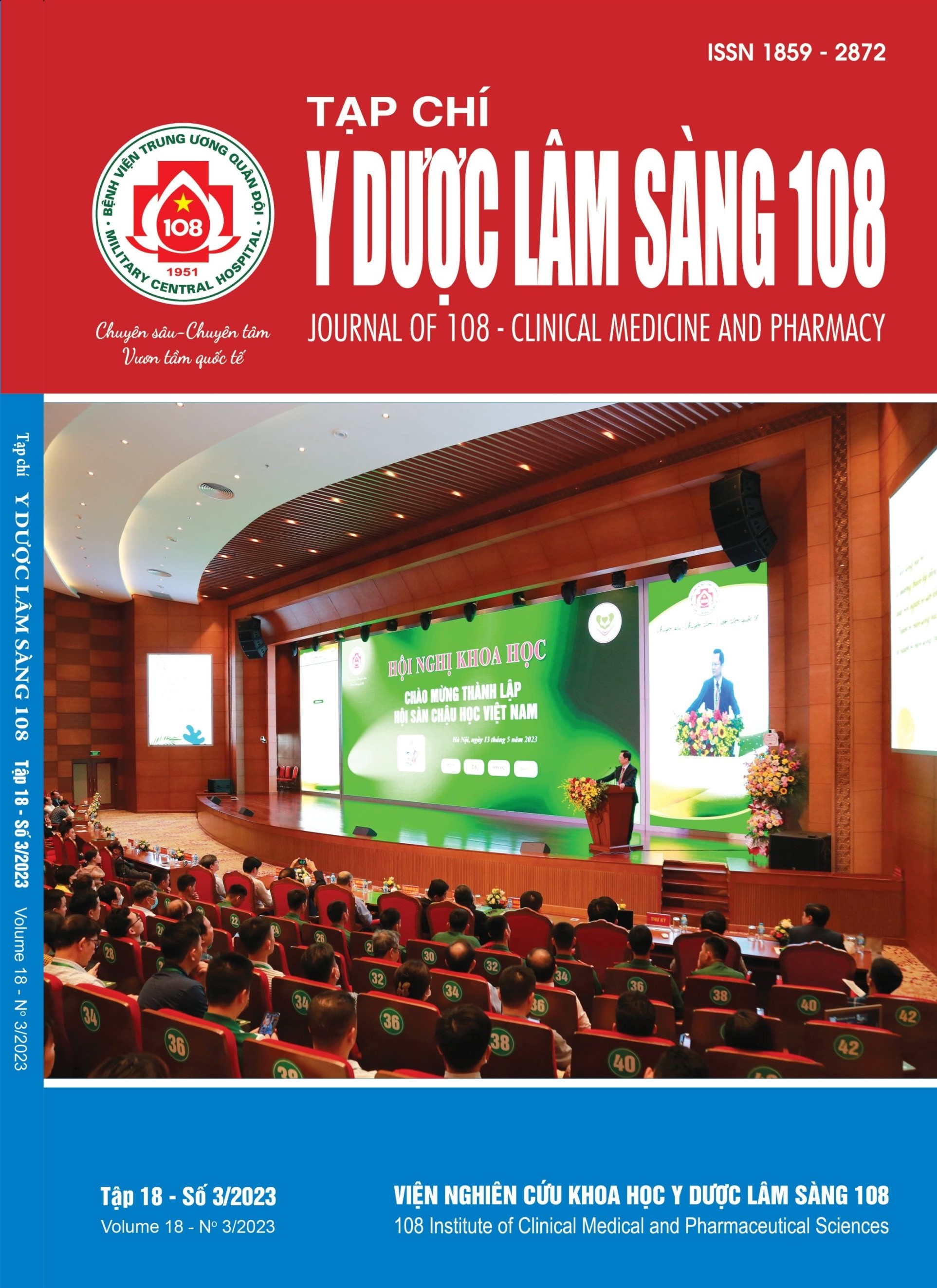Epidemiological features and classification of patients with cleft palate treated at the 108 Military Central Hospital
Main Article Content
Keywords
Abstract
Objective: We research some epidemiological factors and classify cases of cleft palate. Subject and method: A prospective study and clinical descriptions were conducted on 31 patients undergoing surgical treatments at the Centre for Craniofacial and Plastic Surgery - 108 Military Central Hospital, from March to June 2022. Result: In total of 31 patients, there were 16 males (accounting for 51.6%) and 15 females (accounting for 48.4%). The average age was 6.8 ± 9.9 years, patients aged 2 - 3 years old accounted for the largest proportion (54.8%). The highest number of patients came from rural areas (58.1%) followed by ones from mountainous areas (22.6%) and from cities (19.4%). Kinh patients accounted for 87.1%, others from ethnic groups accounted for 12.9%. Patients with other deformities accounted for 22.6%. Among the total, 35.5% were patients whose family members had cleft lip and palate. Incomplete cleft palate accounted for the highest proportion (41.9%), next was complete cleft palate (29.0%), followed by unspecified cleft palate (31.2%), the lowest was cleft soft palate (12.9%). Conclusion: Epidemiological features in cleft palate are found in patients from 2 - 3 years old, mainly in rural areas. There are 35.5% of the patients whose family members have cleft lip - palate. Incomplete cleft palate accounts for the highest percentage.
Article Details
References
2. Tăng Xuân Hải, Trần Minh Long, Lê Xuân Thu (2022) Đánh giá kết quả phẫu thuật điều trị khe hở vòm miệng hai bên toàn bộ bẩm sinh theo kỹ thuật Push Back tại Bệnh viện Sản nhi Nghệ An 2018-2021. Tạp chí Y học Việt Nam (511), tháng 2, số 1 (2022), tr. 118-122.
3. Nguyễn Văn Giáp, Nguyễn Thị Trang và cộng sự (2022), Kết quả điều trị và phục hồi chức năng cho trẻ em mắc dị tật khe hở môi và/hoặc vòm miệng tại bệnh viện Răng Hàm Mặt Trung ương Hà Nội năm 2019-2021. Tạp chí Y học Việt Nam (514), số 2, tr. 234-238.
4. Đỗ Kính (2001) Phôi thai học người. Nhà xuất bản Y học, tr. 438-445.
5. Phạm Thanh Hải, Vũ Quang Hưng, Lương Xuân Quỳnh (2012) Một số nguy cơ, hình thái dị tật khe hở môi, vòm miệng bẩm sinh ở trẻ em được điều trị tại Bệnh viện Đại học Y Hải Phòng năm 2010. Tạp chí Y học thực hành (813), số 3/2022, tr. 5-8.
6. Vũ Quang Hưng, Phạm Thị Nhung, Đoàn Trung Hiếu (2021) Hình thái dị tật khe hở môi, vòm miệng bẩm sinh ở trẻ em tại Bệnh viện Đại học Y Hải Phòng. Tạp Chí Học Việt Nam, 503(2), tr. 247-251.
7. Hlongwa P, Levin J, & Rispel LC (2019) Epidemiology and clinical profile of individuals with cleft lip and palate utilising specialised academic treatment centres in South Africa. PLOS ONE 14(5): 0215931.
8. Elander A, Persson C, Lilja J & Mark H (2016) Isolated cleft palate requires different surgical protocols depending on cleft type. Journal of Plastic Surgery and Hand Surgery 51(4) 228-234.
9. Abdel-Aziz M, & Ghandour H (2010) Comparative study between V-Y pushback technique and Furlow technique in cleft soft palate repair. European Journal of Plastic Surgery 34(1): 27-32.
10. Tan WQ, Xu JH, Yao JM (2012) The Single Z-Plasty for cleft palate repair: A preliminary report. The Cleft Palate Craniofacial Journal, 49(5), 635-639.
11. Allam E, Windsor J, Stone C (2014) Cleft Lip and Palate: Etiology, Epidemiology, Preventive and Intervention Strategies. Anatom Physiol Current Res 4: 1-6.
12. Mossey PA, Little J, Munger RG et al (2009) Cleft lip and palate. Lancet 374: 1773-1785.
13. Martelli DR, Coletta RD, Oliveira EA et al (2015) Association between maternal smoking, gender, and cleft lip and palate. Braz J Otorhinolaryngol 81: 514-519.
 ISSN: 1859 - 2872
ISSN: 1859 - 2872
